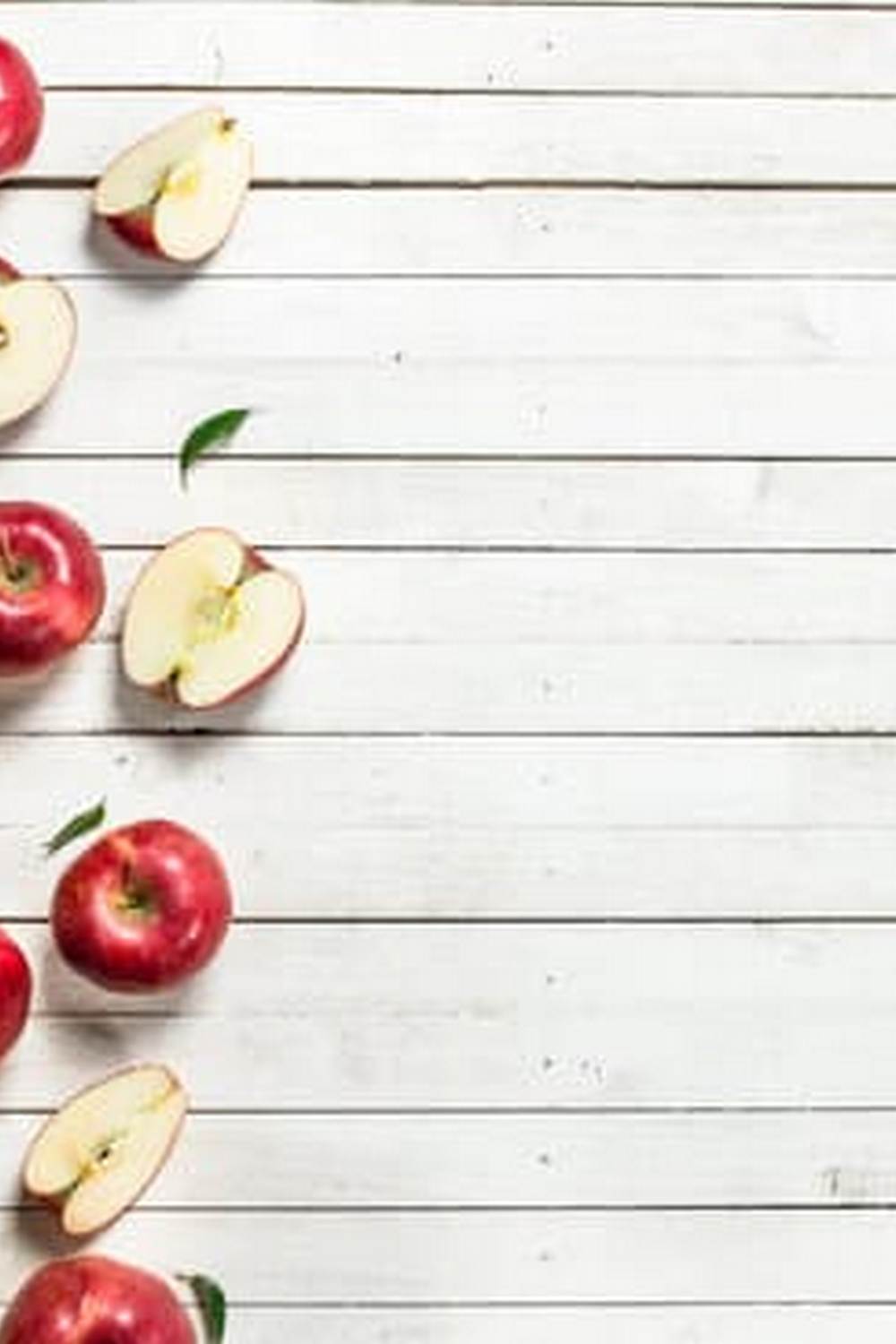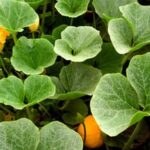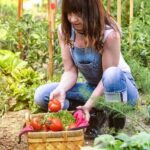Pamela Crawford is a renowned expert in the field of vegetable container gardening, revolutionizing the way people grow their own produce in limited spaces. With her innovative techniques and methods, Pamela has become a pioneer in this gardening method, inspiring countless individuals to start their own container gardens.
Through years of experience and research, Pamela Crawford has perfected the art of vegetable container gardening, emphasizing its numerous benefits. From saving space to easier maintenance, her method offers a practical and efficient way to cultivate a variety of vegetables right at your doorstep. By following her guidance, even beginners can achieve success in growing their own fresh and organic produce.
In this article, we will delve into Pamela Crawford’s approach to vegetable container gardening, exploring the reasons why her method works so well. From selecting the right containers and choosing the ideal vegetables to planting tips and pest control strategies, we will uncover the secrets behind Pamela Crawford’s successful vegetable container gardens.
Benefits of Vegetable Container Gardening
Increased Accessibility and Space Saving
One of the key benefits of vegetable container gardening, as advocated by Pamela Crawford, is the increased accessibility it provides. With containers, you can place your vegetable garden on a balcony, patio, or even indoors, making it possible for individuals with limited outdoor space to still enjoy the pleasures of growing their own produce.
This method also allows for easier maintenance and care since you can move the containers around to ensure optimal sunlight exposure and protection from harsh weather conditions.
Improved Soil Quality and Drainage
Another advantage of Pamela Crawford’s vegetable container gardening method is the ability to control the quality of soil in which your plants grow. By using a high-quality potting mix tailored for vegetables, you can provide optimal nutrition for your plants and improve drainage to prevent issues such as root rot. Additionally, containers offer better protection against soil-borne diseases and weeds, reducing the need for harmful pesticides or herbicides that can harm both the environment and your health.
Enhanced Aesthetic Appeal and Versatility
Vegetable container gardening not only offers practical benefits but also enhances the aesthetic appeal of your living space. With a variety of container options available in different shapes, sizes, and colors, you can create a visually appealing garden that complements your home decor.
Pamela Crawford emphasizes the versatility of container gardening by incorporating edible plants into ornamental arrangements, creating a beautiful fusion of function and design. Whether you’re looking to add a pop of color to your outdoor space or grow fresh herbs right in your kitchen, vegetable container gardening offers endless possibilities for creativity and personalization.
Choosing the Right Containers for Your Vegetable Garden
Pamela Crawford, a renowned expert in vegetable container gardening, emphasizes the importance of choosing the right containers for your vegetable garden. The type of container you select can significantly impact the growth and success of your plants. Crawford recommends opting for containers that are at least 12 inches deep to allow for proper root development. Additionally, containers should have drainage holes to prevent waterlogging, which can lead to root rot.
When it comes to materials, Crawford suggests using containers made from durable materials such as plastic, fiberglass, or ceramic. These materials are not only long-lasting but also provide good insulation for the roots against extreme temperatures. Avoid using containers made from metal or treated wood, as they can leach harmful chemicals into the soil over time.
In her book on vegetable container gardening, Pamela Crawford also advises gardeners to consider the size of the container in relation to the mature size of the plant. Some vegetables, like tomatoes and peppers, require larger containers to accommodate their root systems and ensure optimal growth. By selecting the right containers based on these insights from Pamela Crawford, you can set your vegetable garden up for success and a bountiful harvest.
| Container Material | Advantages |
|---|---|
| Plastic | Durable and lightweight |
| Fiberglass | Long-lasting and good insulation |
| Ceramic | Elegant appearance and good insulation |
Selecting the Ideal Vegetables for Container Gardening
When it comes to selecting the ideal vegetables for container gardening, Pamela Crawford has a wealth of knowledge and expertise to offer. Her years of experience in this field have led her to identify specific vegetables that thrive best in containers, making them perfect for beginners or seasoned gardeners looking to maximize their space. By choosing the right vegetables for your container garden, you can ensure a bountiful harvest and enjoy fresh produce right at your fingertips.
Herbs
One of Pamela Crawford’s top picks for vegetable container gardening is herbs. Herbs like basil, parsley, mint, and thyme are not only easy to grow in containers but also add a burst of flavor to your dishes. With the proper care and maintenance, these herbs can flourish in small spaces and provide you with an endless supply of seasoning for your meals.
Tomatoes
Another favorite of Pamela Crawford for container gardening is tomatoes. Tomatoes come in various sizes and varieties that are suitable for growing in pots or planters. With adequate sunlight, water, and support (like stakes or cages), you can expect a rewarding harvest of juicy tomatoes throughout the growing season. Whether you prefer cherry tomatoes for snacking or heirloom varieties for salads, tomatoes are a versatile vegetable that thrives in containers.
Peppers
Peppers are also among Pamela Crawford’s recommended vegetables for container gardening. Bell peppers, jalapenos, or sweet banana peppers can all be grown successfully in pots or containers on your patio or balcony.
These colorful vegetables not only add visual interest to your garden but also provide you with an abundant supply of crunchy peppers for cooking or snacking. With proper care and attention to watering and fertilizing, peppers can flourish in containers just as well as they would in a traditional garden bed.
By following Pamela Crawford’s advice on selecting the ideal vegetables for container gardening, you can create a thriving garden full of fresh produce that suits your taste preferences and space constraints. Whether you choose herbs like basil and mint, vibrant tomatoes, or spicy peppers, these top picks will ensure a successful vegetable container garden that yields delicious results all season long.
Step-by-Step Guide to Planting Vegetables in Containers
Pamela Crawford, the pioneer of vegetable container gardening, has revolutionized the way people grow their own produce in limited spaces. Her expertise in creating thriving vegetable gardens in containers has helped countless individuals enjoy fresh and flavorful harvests right at their doorstep. With Pamela Crawford’s innovative techniques and expert tips, anyone can successfully plant a bountiful container garden.
When it comes to planting vegetables in containers following Pamela Crawford’s method, there are key steps to consider for optimal growth and yield. Here is a step-by-step guide based on her expert advice:
1. Select the right size containers: Choose containers that are large enough to accommodate the root systems of the vegetables you plan to grow.
2. Use high-quality potting soil: Opt for well-draining soil mixes that are rich in nutrients to support healthy plant growth.
3. Place containers in a sunny location: Position your vegetable containers where they can receive at least 6-8 hours of direct sunlight daily.
By following these essential steps recommended by Pamela Crawford, you can set yourself up for success in planting a thriving vegetable container garden. The key lies in proper planning, preparation, and maintenance throughout the growing season. With Pamela Crawford’s guidance, you can enjoy a delicious harvest of homegrown vegetables year after year.
Watering and Fertilizing Techniques for Successful Vegetable Container Gardening
Pamela Crawford emphasizes the importance of proper watering and fertilizing techniques for successful vegetable container gardening. Water is a critical element in the growth and development of vegetables, and containers often require more frequent watering than traditional ground gardens. Crawford recommends using a drip irrigation system or self-watering containers to ensure consistent moisture levels for your plants. This not only saves time but also helps prevent overwatering, which can cause root rot and other issues.
In addition to watering, fertilizing is essential to provide nutrients for healthy plant growth. Pamela Crawford suggests using a balanced fertilizer specifically designed for vegetables in containers. It is important to follow the instructions on the fertilizer package to avoid over-fertilizing, which can damage plants. A general rule of thumb is to fertilize every 2-4 weeks during the growing season, but be sure to adjust based on the specific needs of your vegetables.
To further optimize your vegetable container garden, consider adding mulch on top of the soil. Mulch helps retain moisture, regulate soil temperature, and suppress weeds, all of which contribute to healthier plants. Natural options like straw or shredded leaves are ideal choices for container gardens. By following Pamela Crawford’s recommendations for watering, fertilizing, and mulching your vegetable containers, you can create an environment that promotes robust plant growth and bountiful harvests.
| Watering Techniques | Fertilizing Tips |
|---|---|
| Use drip irrigation or self-watering containers | Choose a balanced fertilizer for vegetables |
| Ensure consistent moisture levels | Follow instructions on fertilizer packaging |
| Avoid overwatering to prevent root rot | Fertilize every 2-4 weeks during growing season |
Common Pests and Diseases in Vegetable Container Gardens
Pamela Crawford, a renowned expert in vegetable container gardening, not only provides valuable insights on the benefits of this method but also offers practical solutions to common pests and diseases that can plague your garden. By following her advice, you can ensure a healthy and thriving vegetable container garden.
Here are some of Pamela Crawford’s tips for handling common pests and diseases in vegetable container gardens:
- Use row covers: Row covers are a simple yet effective way to protect your plants from pests such as aphids, caterpillars, and beetles. By covering your containers with these protective barriers, you can prevent infestations and keep your vegetables healthy.
- Practice crop rotation: Rotate your vegetable crops each season to prevent the buildup of soil-borne diseases. By planting different types of vegetables in your containers each year, you can reduce the risk of diseases taking hold in your garden.
- Introduce beneficial insects: Encourage natural predators like ladybugs, lacewings, and parasitic wasps to help control pest populations in your vegetable container garden. These beneficial insects can help keep harmful pests in check without the need for chemical pesticides.
By incorporating these strategies recommended by Pamela Crawford into your vegetable container gardening routine, you can minimize the impact of pests and diseases on your plants while ensuring a successful harvest. Follow her expert advice to create a vibrant and thriving garden that will provide you with fresh, homegrown produce throughout the growing season.
Harvesting and Maintenance Tips for a Bountiful Vegetable Container Garden
As you embark on your journey to creating a bountiful vegetable container garden, it is essential to follow the expert advice and tips shared by Pamela Crawford. Her innovative methods have revolutionized vegetable container gardening, making it accessible and successful for gardeners of all levels. By implementing her strategies for harvesting and maintenance, you can ensure a thriving and productive garden throughout the growing season.
One of the key secrets revealed by Pamela Crawford is the importance of regular maintenance in a vegetable container garden. She emphasizes the significance of consistently monitoring the health of your plants, addressing any issues promptly, and providing adequate care to maximize their growth potential. By staying on top of pruning, weeding, and checking for pests or diseases, you can prevent problems from escalating and maintain a healthy garden environment.
In addition to regular maintenance, Pamela Crawford highlights the crucial aspect of proper harvesting techniques. Timing is key when it comes to picking your vegetables, ensuring that they are at peak ripeness for optimal flavor and nutrition.
By following her guidelines on when to harvest different types of vegetables in your containers, you can enjoy a continuous supply of fresh produce throughout the season. Overall, by incorporating Pamela Crawford’s expert tips into your gardening routine, you can experience the joys of a successful vegetable container garden firsthand.
Frequently Asked Questions
What Vegetables Grow Well Together in Containers?
Certain vegetables grow well together in containers because they have similar water, sunlight, and nutrient needs. Some good combinations include lettuce with radishes or carrots, tomatoes with basil or parsley, and peppers with onions or garlic.
What Veg Is Best for Container Gardening?
When it comes to container gardening, some of the best vegetables to grow are cherry tomatoes, lettuce, peppers, cucumbers, and herbs like basil and mint. These plants are relatively compact and can thrive in the limited space provided by containers.
How Deep Should a Container Vegetable Garden Be?
The depth of a container vegetable garden depends on the type of vegetable being grown. In general, most vegetables require a container that is at least 6-12 inches deep for their roots to have enough room to grow and access necessary nutrients.
However, larger plants like tomatoes may need deeper containers up to 18 inches deep for optimal growth and development.

If you’re looking to get into vegetable gardening, or are just looking for some tips on how to make your current garden better, then you’ve come to the right place! My name is Ethel and I have been gardening for years. In this blog, I’m going to share with you some of my best tips on how to create a successful vegetable garden.





